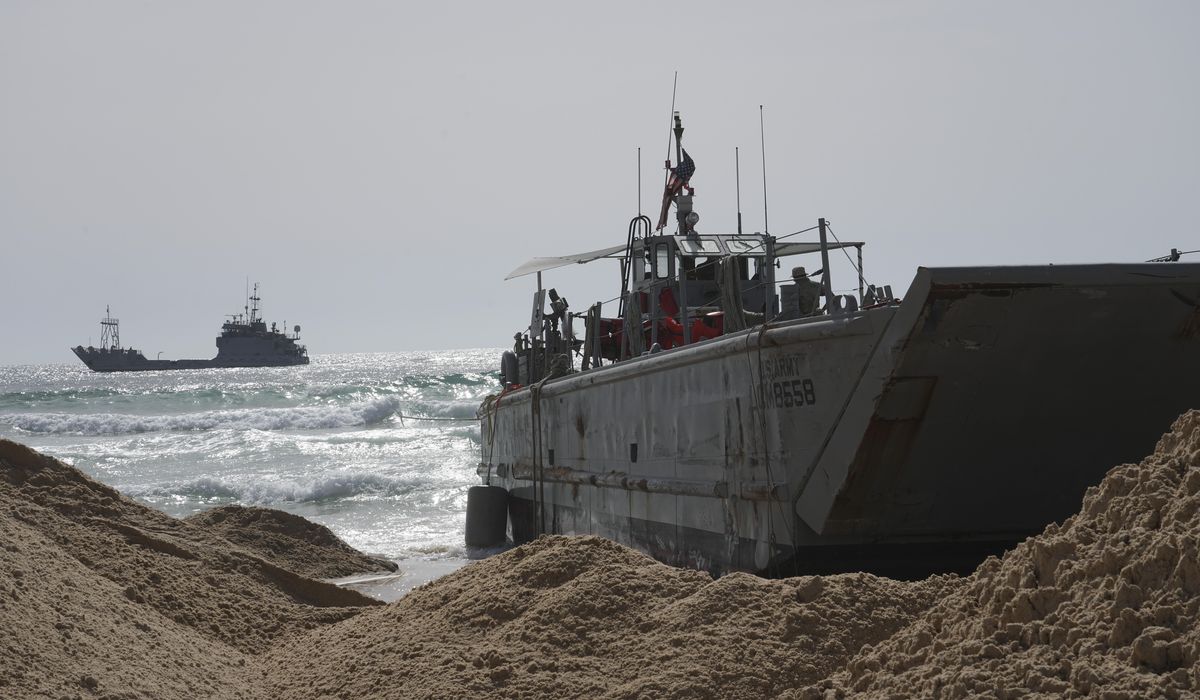


U.S. Central Command officials said Friday they reestablished a temporary pier in Gaza that will allow them to resume the delivery of humanitarian aid to people living in the Palestinian enclave.
The U.S. suspended aid deliveries last week after the pier, known as Joint Logistics Over-the-Shore or JLOTS, was heavily damaged because of the weather. The $320 million project had been in operation for less than two weeks when it was knocked out of action.
“Israeli Defense Force engineers provided all the necessary support to ensure the safe placement of the pier to the peach. The policy of no U.S. boots on the ground does remain in effect,” Vice Adm. Brad Cooper, deputy commander of Central Command, told Pentagon reporters Friday. “We expect to resume delivery of humanitarian assistance from the sea in the coming days.”
The concept proved to be effective in delivering help to Gaza while the pier was operational. About 1,000 metric tons were transported from ships to the beach over the temporary pier, officials said.
“Aid from the pier to the people of Gaza was the second-highest volume of aid entering Gaza from any crossing during that period. The pier accounted for about 30% of all aid delivered to the people of Gaza that week,” Adm. Cooper said. “Given its proven success, we expect to increase the volume of humanitarian assistance provided through the pier over the previous levels.”
U.S. officials hope to ship a million pounds of assistance over the pier every two days once it is fully operational.
“We are definitely moving with a sense of urgency and coordinating with all the partners to move as quickly as possible,” Adm. Cooper said.
U.S. officials said they are continuing to monitor the weather around Gaza so there won’t be a repeat of what happened on May 25 when rough seas caused a section of the pier to detach and damage the equipment. Three of the Army vessels used to help construct the pier lost power and ran aground because of the weather, officials said.
Increasing the number of land crossings into Gaza would be the ideal solution to the humanitarian crisis. Adm. Cooper said they offer the highest capacity for the delivery of aid.
“The temporary pier is additive in this nature, although, as I pointed out, certainly important given where the land crossings are today,” he said.
The U.S. is participating in a convoy management board coordinating the effort to deliver the aid to distribution centers in Gaza once they have crossed the pier. That portion of the mission is primarily U.N.-led.
“It obviously, like other processes, adjusts every day to the dynamic environment on the ground,” he said. “The environment is really dynamic and challenging.”
• Mike Glenn can be reached at mglenn@washingtontimes.com.
